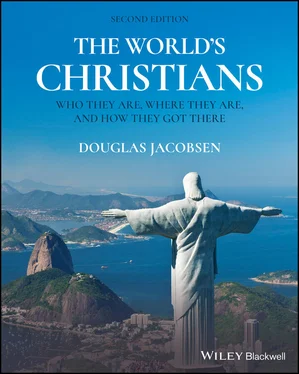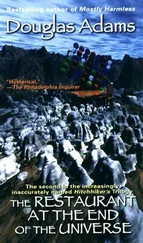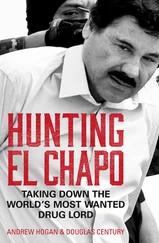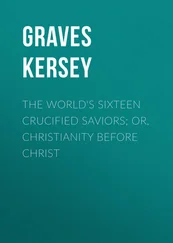Assisted by others in entering the path of salvation – a pathway that is itself a free gift from God – Orthodox Christians believe their own effort is necessary in order for progress to continue. There are two parts to that effort: first, sorrowing for the willful sin one discovers in one’s own life (which can take many different forms) and, second, persisting in the practice of prayer (learning to push all earthly thoughts and cares of life aside and simply be in the presence of God). But these efforts are never individualistic. It is in worship with others that a person learns how to pray, and it is by feeding together on the bread and wine of the Eucharist – which is given even to children – that a person receives the spiritual sustenance for continuing the journey toward salvation in the company of others.
Sometimes references are made to the “Eastern Orthodox Church” in the singular. While it is true that all Orthodox Christians see themselves as spiritual members of one church, there is no single institutional entity called “the Eastern Orthodox Church.” The Orthodox tradition is not housed in one organization, but instead is a family of related churches living in fellowship with each other.
The familial sense of relatedness that exists among the Orthodox churches is different from the way Christians in other traditions understand their connections with each other. The Orthodox view is much less institutional than the way most Catholics think of church, and it is much more mystical and organic than the way most Protestants think of church. The Orthodox tradition is so unique on this point that it has developed its own vocabulary to describe its distinctive sense of connectedness, using words like synodality, conciliarity, and sobornost (fellowship) to define that relationship. All of these terms communicate essentially the same thing: Orthodoxy exists as a united family of churches defined by their mutuality of respect, concern, compassion, and spiritual kinship and by their common involvement in the work of God in the world.
At present, the Eastern Orthodox family includes about thirty separate churches, possessing different degrees of independence. Either fourteen or sixteen churches (the status of two churches is currently disputed) are now designated autocephalous , meaning that other Orthodox churches consider them to be fully self‐governing and independent. These would include, for example, the Russian Orthodox Church and the Antiochian Orthodox Church. Another seven Eastern Orthodox churches are considered autonomous , meaning they exercise full control over their own affairs and are on the way to autocephaly, but their independence has not yet been universally recognized within the Orthodox world. The Orthodox Church of Finland is an autonomous church, for example. Finally, six churches (including the Macedonian and Montenegrin Orthodox Churches) have claimed independence for themselves but have not yet been recognized as independent by other Orthodox churches. Theologically, these six churches are said to be “schismatic,” separated and cut off from fellowship with the other Orthodox churches until their independent status is properly approved by those other churches.
All of these churches acknowledge the authority of the seven great councils of the early church and follow the same basic format for worship, but total uniformity is not their aim. It is assumed that each independent Orthodox church has the right to its own locally adapted, national style of faith. It is also assumed that new churches will constantly be forming as Orthodox Christianity moves into new cultures. When these younger churches have matured they may eventually request independence. Like parents and children in ordinary families, tensions sometimes arise when a younger church seeks its independence and its older “mother church” may not yet be ready to grant autonomy. The situation can become even more complex and tense when several different Orthodox traditions are represented in one nation (as is the case, for example, in the United States and in Ukraine) and lines of jurisdiction overlap.
Most Orthodox churches in the world today are organized along national lines, a relatively recent development fueled by two longstanding religious convictions. One assumption is that each linguistically and culturally defined human community should have its own church so it can worship God in its own words and ways. A second assumption is that states and nations are to be respected because they exist by God’s will – they are ordained by God – and, in light of that conviction, Orthodox Christians have rarely engaged in overt political protest. Even during times of government persecution, Orthodox Christians have typically been respectful of their rulers, although they have sometimes strongly resisted government policies designed to change or control the Orthodox churches. In certain cases, the linkage between nationalism and Orthodox faith has been so strong that the two have practically merged. The Eastern Orthodox tradition makes a distinction between a proper sense of cooperation with the state (called symphonia ) and an improper veneration of, or subservience to, the state (called phyletism ), but sometimes that distinction gets lost in actual practice.
It should be noted that these descriptions of Orthodox practices relate primarily to the Eastern Orthodox Church and not to the Oriental (or Miaphysite) Orthodox Churches. This major divide within the Orthodox world dates back to a sixth‐century dispute concerning the human and divine natures of Christ. The group of churches that became known as Eastern Orthodoxy favors the phrase “two natures in one person” that was proposed at the Council of Chalcedon in the year 451. The group of churches that came to be known as Oriental Orthodox rejects the wording from the Council of Chalcedon and favors their own more unitive way of understanding how the human and the divine were merged in Christ. This may sound like a minor difference of theological opinion, but the implications for Christian ethics and spirituality are significant. The divide between these two families of Orthodox churches is deep and at times in the past it has been violent. While the Eastern and Oriental Orthodox churches are very similar in most matters of Christian faith and practice, and while conversations toward reunion have been going on for more than half a century, it seems highly unlikely that this division will be healed anytime soon.
All Orthodox churches are organized in roughly the same way, with the local see or diocese being the core. This is the heart of the church, where the faithful worship under the guidance and oversight of a local bishop. Every bishop is the spiritual equal of every other bishop. Titles like archbishop and metropolitan, which are given to bishops of important cities, are to some degree designations of honor and respect rather than of power and authority. While archbishops and metropolitans do have special responsibilities within the Orthodox churches, they are not super‐bishops or mini‐popes, and they never hand down decisions about matters of faith as if from on high. The goal is always to establish consensus among all the bishops. Bishops in the Orthodox tradition are unmarried, and most of them were previously monks. The transition from monastery to parish is usually not difficult. Small monasteries are scattered throughout the Orthodox world, so there is almost always one somewhere nearby. Many laypeople visit the monasteries on a regular basis, and many monks serve as spiritual directors for local laypeople and clergy.
In contrast to the bishops, most Orthodox priests are married. Priests frequently need to give spiritual advice to the married members of their parishes, and it is assumed that unmarried men would be ill‐equipped for the task. The extended family is tremendously important in the Orthodox tradition. The family is perceived as the most intimate social container of the Orthodox faith, the place where children first learn of God and where Orthodox Christians learn the joys and difficulties of living in relationship or synodality. Many Orthodox church buildings reflect this familial ethos. While most non‐Orthodox individuals are more familiar with Orthodox churches that are large and impressive – these are the kinds of churches that tourists visit – many Orthodox churches are small and intimate places (see Figure 1.4). A local village or neighborhood church may accommodate only fifteen or twenty people, and almost every worshipper in the room will be related to everyone else, sharing the communion of Orthodox faith and spirituality as a natural part of life.
Читать дальше












